MALAYSIA
Kuala Lumpur

Kuala Lumpur
Kuala Lumpur
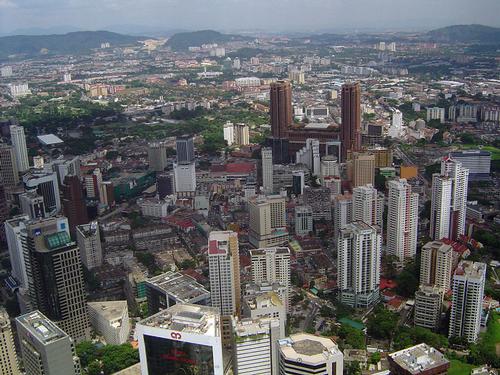 Kuala LumpurPhoto: Daniel Berthold CC 3.0 Unported no changes made
Kuala LumpurPhoto: Daniel Berthold CC 3.0 Unported no changes made
Kuala Lumpur is the capital and the second largest city in Malaysia. According to the 2010 census, the city has a population of 1,627,172. Metropolitan Kuala Lumpur has a population of 7,239,871. Economically, Kuala Lumpur is the fastest growing urban region in Malaysia. The city is the financial, economic and cultural centre of the country. Kuala Lumpur is the seat of the Parliament of Malaysia. There you can see the official residence of the king. Kuala Lumpur lies within the boundaries of the federal territory of Kuala Lumpur and is one of the three federal territories of Malaysia.
Location
The coordinates of Kuala Lumpur are: 3 ° 8'51' N 101 ° 41'36' E
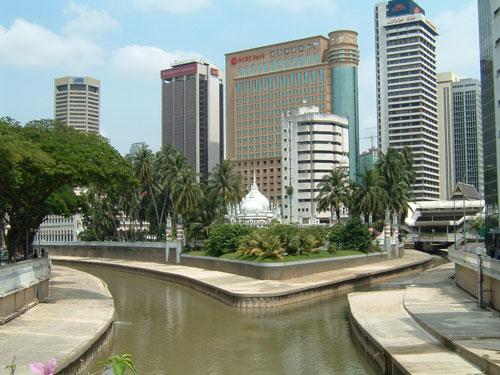 The Klang and Gombak rivers flow together near Kuala LumpurPhoto: Vini 175 CC 2.5 Generic no changes made
The Klang and Gombak rivers flow together near Kuala LumpurPhoto: Vini 175 CC 2.5 Generic no changes made
Kuala Lumpur is located where the Klang and Gombak rivers meet in the enormous Klang Valley. The valley is bounded by the Titiwangsa Mountains to the east, several small mountain ranges to the north and south, and the Straits of Malacca to the west. The name Kuala Lumpur means muddy confluence . The city is located on the west coast of peninsular Malaysia and spreads out along the flat land of the valley. The city has an area of 243 km2 and lies at an average altitude of 21.95 m.
Weather
Kuala Lumpur has a tropical rainforest climate, with abundant rainfall falling mainly during the rainy season from October to March. The city is protected by the Titiwangsa Mountains in the east and the Indonesian island of Sumatra in the west. Temperatures are high. The average high temperatures range between 31° C and 33° C. The average low temperatures range between 22° C and 23.5° C. The average annual rainfall is 2868 mm. Rainfall occurs even in the relatively dry months of June and July, more than 133 millimetres per month. During heavy rains, flooding is common, especially in the city centre and downstream areas.
History
Kuala Lumpur was founded around the 1850s, when the first tin mines were opened. The Chinese miners came to the confluence of the Sungai Lumpur (Mud River) and Sungai Klang (Klang River) with the intention of opening large mines there. These mines grew into a trading post, which later became a border town. At that time, many problems arose, such as the Selangor Civil War, and Kuala Lumpur was also plagued by diseases, fires and floods.
The third Chinese chief of Kuala Lumpur, Yap Ah Loy, gave a strong impetus to the further growth of the city around the 1870s. He stimulated the development of Kuala Lumpur by reforming its legislation and introducing legal regulations. The small settlement grew into a thriving mining town. In 1896, Kuala Lumpur was chosen as the capital of the newly formed federation of Malaysia.
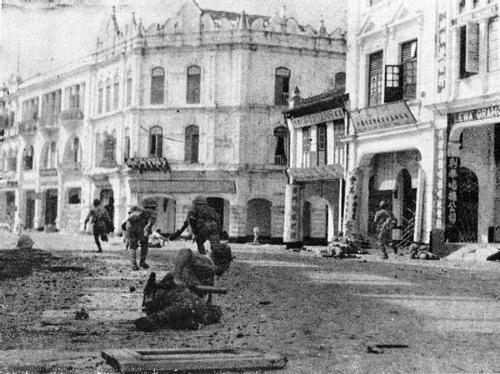 Kuala Lumpur during the Second World WarPhoto: public domain
Kuala Lumpur during the Second World WarPhoto: public domain
During World War II, Kuala Lumpur was occupied by the Japanese Imperial Army on 11 January 1942. The occupation of the city lasted until 15 August 1945 when the Commander-in-Chief of the Japanese Seventh Area Army in Singapore and Malaysia surrendered to British forces after atomic bombs were dropped on Hiroshima and Nagasaki.
In 1957, the Federation of Malaysia gained its independence from British rule and Kuala Lumpur became the capital of the independent federation and of Malaysia. Kuala Lumpur remained the country's capital until Malaysia was formed on 16 September 1963. Putrajaya was then declared the seat of the federal government. The main state institutions were moved from Kuala Lumpur to Putrajaya. Kuala Lumpur still retained its legislative function and remained the residence of the king.
Sights
Tourism plays an important role in the city's economy, along with the service sector. Large world-famous hotel chains are located in the city. The major tourist destinations in Kuala Lumpur are Merdeka Square, the Parliament Building, Petaling Street, the National Palace, Kuala Lumpur Tower, the National Museum with a collection consisting of objects and paintings collected throughout the country, the Central Market, the National Monument and religious sites such as Jamek Mosque and Batu Caves. Various cultural festivals take place in Kuala Lumpur.
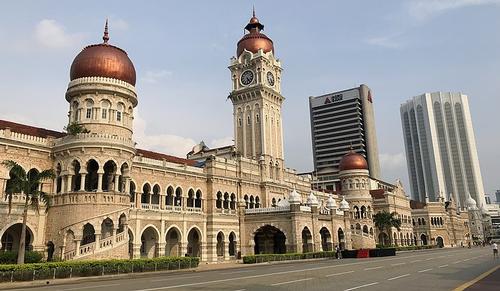 Sultan Abdul Samad Building in Kuala LumpurPhoto: Dudva CC 4.0 Internation no changes made
Sultan Abdul Samad Building in Kuala LumpurPhoto: Dudva CC 4.0 Internation no changes made
The architecture of Kuala Lumpur is a mix of old colonial influences, Asian traditions, Malay Islamic inspiration and modern and post-modern architecture. Kuala Lumpur is a relatively newly built city compared to other Southeast Asian capitals such as Bangkok, Jakarta and Manila. The city's colonial buildings were constructed in the late 19th and early 20th centuries.
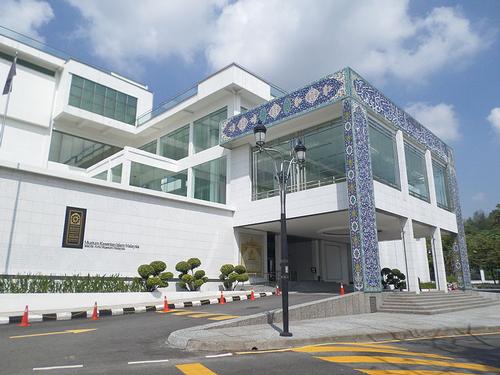 Islamic Art Museum in Kuala LumpurPhoto: Chongkian CC 4.0 International no changes made
Islamic Art Museum in Kuala LumpurPhoto: Chongkian CC 4.0 International no changes made
The Islamic Art Museum of Malaysia and the National Planetarium were built as religious structures, complete with dome and minaret, but they have been transformed into a place of science and knowledge. There are over seven thousand Islamic artefacts here, including rare pieces, as well as a library of Islamic art books. The museum's collection also includes objects from China and Southeast Asia. Much attention is paid to contemporary art from Malaysia and the rest of Asia.
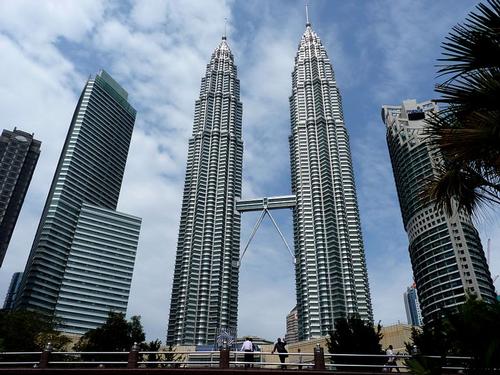 Petronas Twin Towers in Kuala LumpurPhoto: Dudva CC 3.0 Unported no changes made
Petronas Twin Towers in Kuala LumpurPhoto: Dudva CC 3.0 Unported no changes made
The 452-metre tall Petronas Twin Towers are the tallest twin buildings in the world. The towers lie in the heart of the so-called golden triangle and were designed according to motifs from Islamic art. From the Skybridge on the 41st floor, which connects the two towers, you have a wonderful view of the city. You can see the towers from almost any point in Kuala Lumpur.
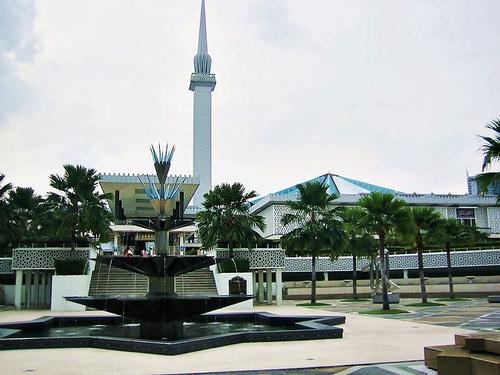 National Mosquein Kuala LumpurPhoto: Khalzuri CC 3.0 Unported no changes made
National Mosquein Kuala LumpurPhoto: Khalzuri CC 3.0 Unported no changes made
The National Mosque (Masjid Negara) is a modern mosque that features a 74-metre-high minaret atop an umbrella-shaped roof. The mosque attempts to symbolise Malaysia's independent and ambitious vision for the future and was built in 1965, when Malaysia and Singapore parted ways.
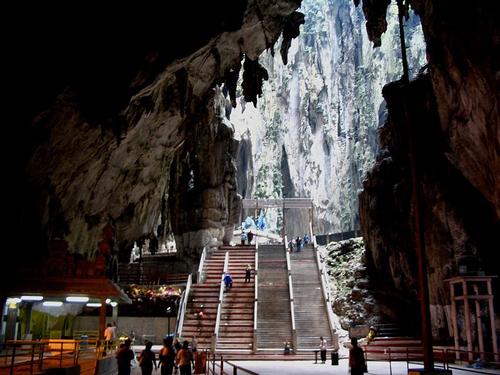 Batu caves in Kuala LumpurPhoto: Patrice78500 in the public domain
Batu caves in Kuala LumpurPhoto: Patrice78500 in the public domain
The Batu Caves lie just outside Kuala Lumpur and are a must for every tourist. The caves lie within one of the holiest Hindu shrines in the country and are well visited. They have an extensive system of corridors and a beautiful staircase for access. The caves are labyrinthine and extend in all directions, visitors have limited access to the system. Cheeky monkeys add a fun element to the visit. Tourists should stash all valuables because of finger-wagging monkeys and pickpockets. Try to visit the caves on a weekday, preferably early in the morning.
Tips
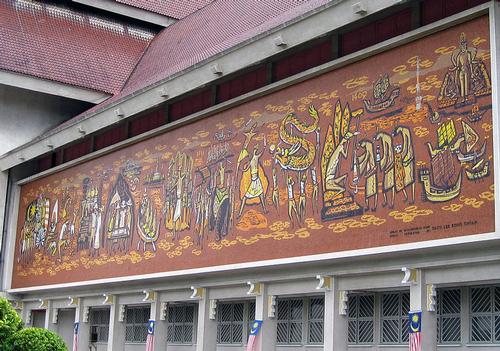 National Museum in the lake Gardens in Kuala LumpurPhoto: DaveSumpner in the public domain
National Museum in the lake Gardens in Kuala LumpurPhoto: DaveSumpner in the public domain
The Lake Gardens, a 92-hectare garden near the Parliament building was once the home of a British colonial official. The park includes a butterfly garden, a deer park and an orchid garden. There are three forest reserves in the city. These remaining forest areas are home to a number of animal species especially monkeys, shrews, squirrels and birds. The National Museum is also located here and has an impressive collection of objects about the history, arts and crafts of Malaysia. The strangest object in the museum is the "amok catcher", which was used to treat lunatics.
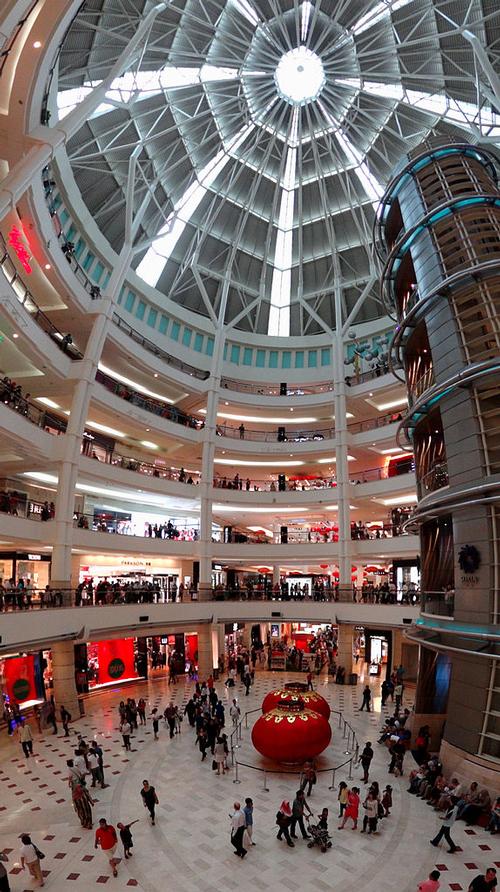 Suria Shopping Malls in Kuala LumpurPhoto: Bjørn Christian Tørrissen CC 3.0 Unported no changes
Suria Shopping Malls in Kuala LumpurPhoto: Bjørn Christian Tørrissen CC 3.0 Unported no changes
With 66 shopping malls in the city, Kuala Lumpur is a world-famous shopping destination unique in Malaysia. Suria KLCC is one of the most attractive shopping malls in Malaysia because of its location under the Petronas Twin Towers. Apart from Suria KLCC, the Bukit Bintang district has the highest concentration of shops in Kuala Lumpur. It is home to several cafes, excellent restaurants and luxury shopping malls.
Useful links Kuala Lumpur
BBC Country ProfilesWorld Fact Book Explore all Countries
How to call
Last updated November 2025
Copyright: Team - The World of Info